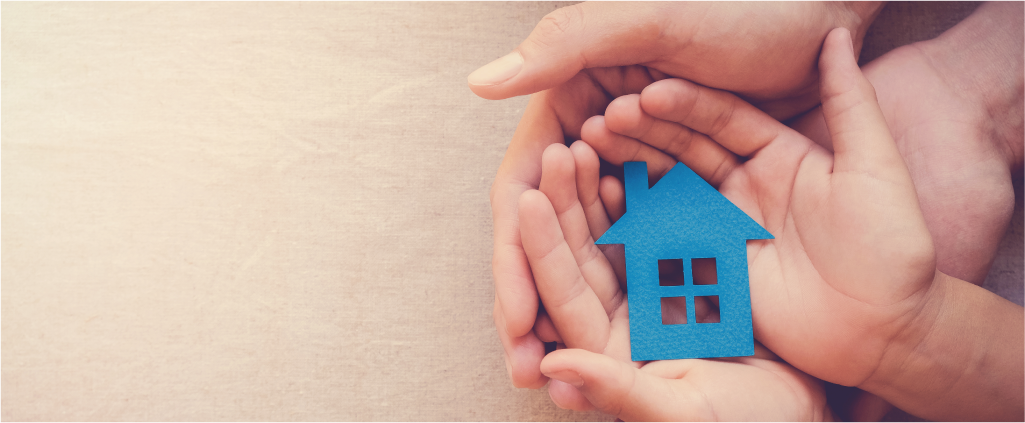There’s more to dust than dust mites
The average home collects 40 pounds of dust every year; and it isn’t just small particles of dirt. How much dust you have in your home depends on several factors including where you live, the season, how many people live in your home, whether you have pets, and even how you clean. Though dust itself is complicated, even to researchers who devote their time to studying it, getting rid of it is not. Read on to learn where dust comes from, the impact it has on your health, and how to make your home as dust-free as possible.
A study conducted by Layton and Beamer found that “the specific dust mix in any household differs according to climate, age of the house and the number of people who live in it, not to mention the occupants’ cooking, cleaning and smoking habits” and “the majority of household dust (about 60%) comes from outside, through windows, doors, vents and, significantly, on the soles of your shoes.” Though the research is nearly a decade old, no recent studies have found error in the findings.
If you have a dust allergy, you probably want to know just how to get rid of the seemingly endless amounts of dust that gather in your home. If you are one of the fortunate ones and dust doesn’t cause an allergic reaction, it’s considered unsightly and can deteriorate the air quality of your home. In fact, even if you don’t have a dust allergy, the components found in dust can affect your lungs and overall health.
You vacuum it, sweep it, and wipe it off your furniture. But do you know what it actually is, and how it may affect your health? It goes without saying that your home will never be dust-free, but there are ways to reduce your own dust loading, and it’s important that you try.

The main sources:
- pets
- wall-to-wall carpet
- soft furniture
- stuffed toys
- bedding
- damp areas
- indoor plants
- mattresses, pillows, and bedding
The Common Components of Dust
As mentioned above, 60% of household dust comes from outside. Pollen, a well-known allergen, can be carried inside on your shoes, your clothes, and even your hair. As you move around in your home, you’re spreading the pollen, which then floats in the air and settles onto surfaces. This is also true of soil, particulate matter from fire, smoking, or combustion vehicles, and any other outdoor contaminants you can think of.
Pollen comes from trees, grasses, flowers and weeds. People can be allergic to different types of pollen. For instance, some people are allergic to pollen from only beech trees; others are allergic to pollen from only certain kinds of grasses. Pollen is a common component of household dust and may be the true cause of a dust allergy.
Mold can grow in dust, paints, wallpaper, insulation, drywall, carpet, fabric, and upholstery. It also grows well on paper products, cardboard, ceiling tiles, and wood products. Mold will grow in places with a lot of moisture, such as around leaks in roofs, windows, or pipes, or where there has been flooding.
It’s a common misconception that dust is mostly dead skin particles. While it’s true that dust can and often does contain dead skin, it’s usually not as big a percentage as people think. Instead, what dead skin is floating around in your home acts as a magnet for dust mites and other indoor air pollutants.
The body parts and fecal matter of insects, especially cockroaches, are commonly found in dust. If you happen to be allergic to cockroaches, this could aggravate allergic reactions. Cockroaches aren’t picky about which homes they infest. So, even if your house is spotless, these pests can enter from the outside environment, the neighbor’s house (especially if you live in an apartment), or can be brought in through the plumbing.
Dust mites – sometimes called bed mites – are the most common cause of allergy from household dust. Dust mites live and multiply easily in warm, humid places. They prefer temperatures at or above 70 degrees Fahrenheit with humidity of 75 to 80 percent. They die when the humidity falls below 50 percent. They are not usually found in dry climates.
Dust mite particles are often found in pillows, mattresses, carpeting and upholstered furniture. They float into the air when vacuuming, walking on a carpet or disturbing bedding and they settle once the disturbance is over.
Dust mites are a common cause of asthma in children.
A house does not need to be visibly dirty to trigger a dust mite allergy reaction. The particles are too tiny to be seen and often cannot be removed using normal cleaning procedures. In fact, a vigorous cleaning can make an allergic person’s symptoms worse.
As discussed, dust mites are microscopic pests that occur naturally and thrive in humid environments. Even if your home isn’t abnormally warm or damp, it’s likely that you have dust mites hiding out on your bedding, carpets, and curtains. Since dust is made up of things like pet dander and dead skin — some of dust mites’ favorite snacks — the more dust you have, the more dust mites you’re likely to have.
Contrary to popular opinion, there are no “hypoallergenic” breeds of dogs or cats. That is because people are not allergic to an animal’s hair, but to an allergen found in the saliva, dander (dead skin flakes) or urine of an animal with fur.
Pet dander — the tiny flecks of skin that animals shed — is another common allergen found in dust. Even if you don’t have a pet of your own, people coming into your home could have pet dander on their clothing. When pet dander settles to surfaces in the home, it attracts other dust and dust mites, exacerbating the problem.
In households with birds, feathers and bird droppings can also become embedded in household dust and cause problems for people who are allergic to them.
If you’ve ever eaten a meal in front of the living room television, you know how easy it is to spill a few crumbs. If you sweep up that food debris immediately, you won’t have much of a problem. However, all too often, small food particles are dropped and forgotten, making them a natural component of dust.
Health Effects
Not only can dust make your home look and feel dirty, it can also impact your health.
Symptoms:
- sneezing
- runny or stuffy nose
- red, itchy or teary eyes
- wheezing
- coughing
- tightness in the chest
- shortness of breath
- itching
Breathing in high concentrations of dust over many years is thought to reduce lung function in the long term and contribute to disorders like chronic bronchitis and heart and lung disorders.
Dust in your home is more than a minor nuisance: Inhaling dust can bring on allergy and asthma symptoms, making sufferers uncomfortable. Learn how to get rid of dust in your house so everyone can breathe easier.

How Do you Reduce the dust in your house?
Regularly dusting can help improve the indoor air quality and overall respiratory health. A quick walk through your house can show you the obvious places that dust tends to gather — from windowsills to bookshelves. In fact, most surfaces collect a thin layer of dust. You may not be able to detect it easily, but you know it’s there. Fortunately, dust in common places may not be a huge problem, since it’s likely that you clean these areas regularly. It’s important that you dust these less noticeable places, too, since dust attracts more dust.
Beds are a prime habitat (where 1/3 of life occurs). Dust mites, pet dander, and dead skin (three things commonly found in dust) can collect in your bed. Washing your sheets and comforter weekly will help cut down on the amount of pollutants you find in your home.
In addition to cleaning other surfaces in your home, special attention should be paid to your electronics. Keeping them dust-free will not only lessen the overall dust in your home but will keep your electronics in better working order.
Remember when we said that up to 60% of dust particles are tracked in from outside? You can drastically decrease that number by removing your shoes before you enter your home. If that’s not possible, avoid wearing them past the front door.
If possible, opt for hardwood floors. It’s much easier to remove dust from non-carpeted floors. If this isn’t an option, be sure to vacuum regularly using a vacuum equipped with a HEPA filter.
Keeping humidity levels at 40% or less can help make your home less hospitable to moisture-loving dust mites.
Air filters in heating and air conditioning units can trap dirt, dust mites, and pet dander. Changing them regularly can help prevent dust from collecting and make the air in your home easier to breathe.
Performing this task every few months will help combat dust as well as increase the efficiency of the furnace. Look for HEPA rating, and use pleated or electrostatic filters which are more effective at trapping dust instead of fiberglass filters.
Installing a HEPA air purifier or adding a HEPA filter to your vacuum will also help; these filters effectively capture microscopic particles.
Even if you aren’t allergic to pet dander, keeping your pets well-groomed can help cut down on the amount of dust and dust mites in your home.
Clutter may not seem like a big deal but it’s very attractive to dust. The more organized your home is, the fewer places dust will be able to settle and remain unnoticed.

